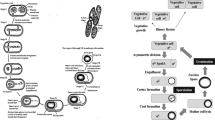Abstract
The use of Oscillating Magnetic Fields (OMF) during freezing has been advocated by some for preserving the intrinsic ‘fresh’ qualities of the subsequently thawed food. This paper describes studies to investigate the effects of a range of different OMF freezing settings using an ABI Cells Alive System (CAS) freezer on characteristics of the freezing process and food-quality parameters. The effects of short-term frozen storage on sample properties were also evaluated. Apple and potato samples were frozen at − 30 or − 45 °C with a range of OMF settings whilst measuring sample temperatures. Samples were then either immediately thawed or stored frozen for 1 month. Effects of OMF on freezing temperature curve texture parameters, sample dimensions, sample weights and sample texture parameters of thawed samples were determined. Overall, results showed no statistically significant continuum of effect in these trials that prevails across all CAS settings and/or temperatures for apple and potato for any parameter measured. However, significant effects were seen at some settings for some parameters for each product, and this may suggest that OMF may possibly be tuneable for specific situations. Where significant changes did occur, these only appeared at isolated settings, temperatures or storage periods. This suggests that OMF may not affect all foods in an equal manner and that any effect depends on an interrelationship of food type, freezing rate, magnetic field frequency and storage conditions. We conclude that there is no major effect of OMF on freezing parameters and there is no overall pattern of OMF on freezing processes.


Similar content being viewed by others
References
ABI Co., Ltd. (2007). CAS: cells alive system. The CAS energy function has an international patent. Available in four parts at: http://www.rayswebstudio.co.uk/Lynton/download-pdf/English%20Brochure_01.pdf and ... _02.pdf, ... _03.pdf, ... _04.pdf. Accessed Mar 2017.
Choi, Y. S., Ku, S. K., Jeong, J. Y., Jeon, K. H., & Kim, Y. B. (2015). Changes in ultrastructure and sensory characteristics on electro-magnetic and air blast freezing of beef during frozen storage. Korean Journal of Food Science of Animal Resources, 35, 27–34.
Comandini, P., Blanda, G., Soto-Caballero, M. C., Sala, V., Tylewicz, U., Mujica-Paz, H., Valdez Fragoso, A., & Gallina Toschi, T. (2013). Effects of power ultrasound on immersion freezing parameters of potatoes. Innovative Food Science & Emerging Technologies, 18, 120–125.
Delgado, A. E., Zheng, L., & Sun, D.-W. (2009). Influence of ultrasound on freezing rate of immersion-frozen apples. Food and Bioprocess Technology, 2, 263–270.
James, C., Purnell, G., & James, S. J. (2015a). A review of novel and innovative freezing technologies. Food and Bioprocess Technology, 8, 1616–1634.
James, C., Reitz, B. G., & James, S. J. (2015b). The freezing characteristics of garlic bulbs (Allium sativum L.) frozen conventionally or with the assistance of an oscillating weak magnetic field. Food and Bioprocess Technology, 8, 702–708.
Kelly, T. (2008). Mr. Freeze. Forbes, http://www.forbes.com/forbes/2008/0602/076.html. Accessed Mar 2017.
Kim, Y. B., Jeong, J. Y., Ku, S. K., Kim, E. M., Park, K. J., & Jang, A. (2013a). Effects of various thawing methods on the quality characteristics of frozen beef. Korean Journal of Food Science of Animal Resources, 33, 723–729.
Kim, Y. B., Woo, S. M., Jeong, J. Y., Ku, S. K., Jeong, J. W., Kum, J. S., & Kim, E. M. (2013b). Temperature changes during freezing and effect of physicochemical properties after thawing on meat by air blast and magnetic resonance quick freezing. Korean Journal of Food Science of Animal Resources, 33, 763–771.
Ku, S. K., Jeong, J. Y., Park, J. D., Jeon, K. H., Kim, E. M., & Kim, Y. B. (2014). Quality evaluation of pork with various freezing and thawing methods. Korean Journal of Food Science of Animal Resources, 34, 597–603.
Otero, L., Rodríguez, A. C., Pérez-Mateos, M., & Sanz, P. D. (2016). Effects of magnetic fields on freezing: Application to biological products. Comprehensive Reviews in Food Science and Food Safety, 15, 646–667.
Owada, N. (2007). Highly-efficient freezing apparatus and highly-efficient freezing method. US Patent 7237400 B2.
Owada, N., & Kurita, S. (2001). Super-quick freezing method and apparatus therefore. US Patent US 6250087 B1.
Suzuki, T., Takeuchi, Y., Masuda, K., Watanabe, M., Shirakashi, R., Fukuda, Y., Tsuruta, T., Yamamoto, K., Koga, N., Hiruma, N., Ichioka, J., & Takai, K. (2009). Experimental investigation of effectiveness of magnetic field on food freezing process. Transactions of the Japan Society of Refrigerating and Air Conditioning Engineers, 26(4), 371–386.
Tregunno, N. B., & Goff, H. D. (1996). Osmodehydrofreezing of apples: Structural and textural effects. Food Research International, 29, 471–479.
Watanabe, M., Kanesaka, N., Masuda, K., & Suzuki, T. (2011). Effect of oscillating magnetic field on supercooling in food freezing. Proceedings of the 23rd IIR International Congress of Refrigeration; refrigeration for sustainable development, August 21–26, Prague, Czech Republic. 1, 2892–2899.
Woo, M. W., & Mujumdar, A. S. (2010). Effects of electric and magnetic field on freezing and possible relevance in freeze drying. Drying Technology, 28, 433–443.
Yamamoto, N., Tamura, S., Matsushita, J., & Ishimura, K. (2005). Fracture properties and microstructure of chicken breasts frozen by electromagnetic freezing. Journal of Home Economics Japan, 56, 141–151.
Zhou, Z., Zhao, H., & Han, J. (2012). Supercooling and crystallization of water under DC magnetic fields. CIESC Journal, 63, 1404–1408.
Acknowledgements
The authors gratefully acknowledge the funding support of Air Products in this study and the placement students Nabil Benarib and Hugo Mazet who collected much of the experimental data.
Author information
Authors and Affiliations
Corresponding author
Rights and permissions
About this article
Cite this article
Purnell, G., James, C. & James, S.J. The Effects of Applying Oscillating Magnetic Fields During the Freezing of Apple and Potato. Food Bioprocess Technol 10, 2113–2122 (2017). https://doi.org/10.1007/s11947-017-1983-3
Received:
Accepted:
Published:
Issue Date:
DOI: https://doi.org/10.1007/s11947-017-1983-3




